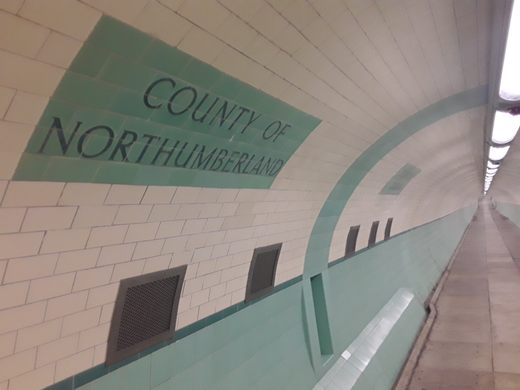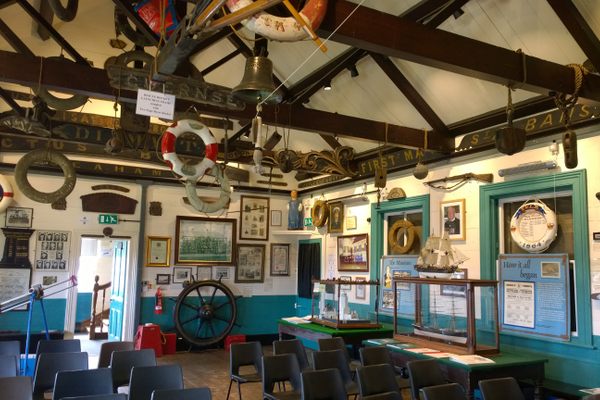AO Edited
Tyne Cyclist and Pedestrian Tunnels
Home to the longest wooden escalators in the world.
Buried beneath the river bed of the River Tyne is a pedestrian and cyclist tunnel that was built to provide a vital link between the communities on either side of the river. Access to these tunnels is via the longest wooden escalator in the world.
The Tyne Cyclist and Pedestrian Tunnels was an ambitious engineering project which involved miners operating in compressed air to excavate the tunnels. The project cost £833,000 to construct and was completed in 1951. The two tunnels run parallel, one for pedestrians and the other for cyclists. Both tunnels are 884 feet (270 meters) long and are 40 feet (12 meters) below the river bed at its deepest point. The cyclist tunnel has a greater diameter of 12 feet (3.7 meters), the pedestrian tunnel is 10 feet (3.2 meters) in diameter.
This was Britain’s first purpose-built cyclist tunnel, and it links to routes along the United Kingdom’s National Cycling network. The tunnels were built to connect the Tyneside neighborhoods of Howdon (north of the River Tyne) and Jarrow (south of the River Tyne). The tunnels created a vital link for thousands of Tynesiders who worked in the shipyards and factories that at one time lined the banks of the river.
The escalators on site are still the originals, installed when the tunnels were first constructed in 1951. They are Waygood-Otis escalators and are composed of 306 wooden steps. When they were first installed, the steps were the highest single-rise escalators in the UK, with a vertical rise of 85 feet (26 meters). They remain the longest set of wooden escalators in the world.
The tunnels are now Grade II listed and recently underwent a major restoration that cost around £16 million. The renovations involved closing the tunnels for six years. They reopened in August 2019.
During the refurbishment, two of the four original wooden escalators were removed and replaced with glass-enclosed inclined platform lifts. The remaining wooden escalators were left in place as emergency staircase exits, but are no longer operational. The side paneling of the wooden escalators has been removed to showcase the engineering. The internal workings of the escalators are now lit and visible from the adjacent platform lifts.
Walking or cycling through the tunnels is like taking a journey back in time to the 1950s. Along with the wooden escalators, many original 1950s features have been retained including the tiling, which lines the interior of the tunnels. The old signage states the county boundaries as Northumberland and Durham. The county boundary line under the river is marked out at the half-way point along the tunnel. This is now the boundary of North Tyneside and South Tyneside.
The tiling and straight route of the tunnel result in some amazing acoustics, with conversations being heard along the length of the tunnel.
Know Before You Go
Parking is available on the south side at Jarrow, there is limited parking by the north entrance.
The north terminal is three-quarters of a mile from Howdon metro station, and the south terminal is three-quarters of a mile from Jarrow metro station. Free to use, currently open 24 hours.






























Follow us on Twitter to get the latest on the world's hidden wonders.
Like us on Facebook to get the latest on the world's hidden wonders.
Follow us on Twitter Like us on Facebook